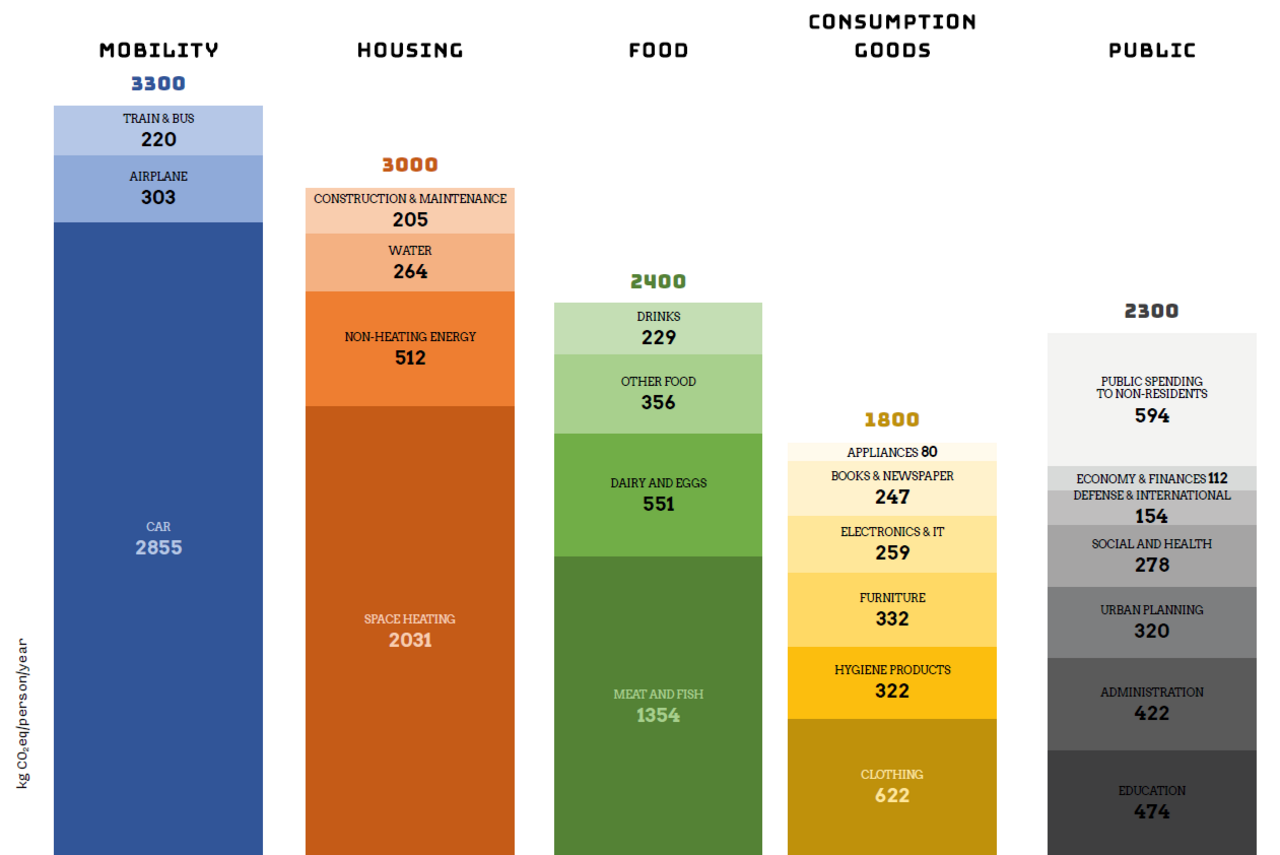Carbon footprint
What is the carbon footprint?
It's the sum of direct and indirect GHG emissions of a product or process over its life cycle, expressed in kg or tons CO2eq based on their global warming potential.
What is our carbon footprint?
Calculating one's own carbon footprint helps us understand the impacts of our consumption choices, such as whether to take the car or bus or what type of food to buy. Even if industry and the public sector do their part to decarbonize, we need to change our consumption choices to fully decarbonize and reach the Paris Agreement target.
The consumption-based carbon footprint adds up GHG emissions occurring anywhere in the world due to consumption in Luxembourg. Another kind of accounting is the production-based national inventory, which includes GHG emissions occurring within the country, irrespective of whether the goods produced in Luxembourg are also exported.

Why is a Luxembourger's carbon footprint so high?
At 13 t CO2eq per person per year, Luxembourg’s carbon footprint is higher than those of our neighbors, currently at 11 t in Germany and 8.6 t in France and Belgium. It is so high mainly because Luxembourg is a rich country and residents are more likely to own larger houses, several cars, and fly at least once per year. Luxembourgers are also less likely to take public transportation.
What is our target for 2050?
To be aligned with the 1.5°C target, each person would need to have an annual carbon footprint of 1 to 2 tons CO2 eq. in 2050 (allocating GHG emissions equally to the world population).
Why isn't our target zero?
Some sectors will still produce GHG emissions in 2050, and these need to be countered with carbon uptake or sequestration to achieve net zero emissions.
Want to learn more?
Check out our carbon footprint game and our brochure, which goes into a lot more detail on mobility, housing, food, and consumption goods.
What about carbon uptake or sequestration?
What do we do with the remaining emissions of 1.5 t CO2eq/capita/year in 2050? We need to significantly improve our carbon sequestration efforts, such as through re-forestation and improved management of agricultural soils. Two other technologies may help us get to net zero emissions. Carbon capture and storage refers to capturing CO2 emitted from industrial sources and storing it. Direct air capture, which remains very expensive, refers to capturing CO2 from the air and storing it.

